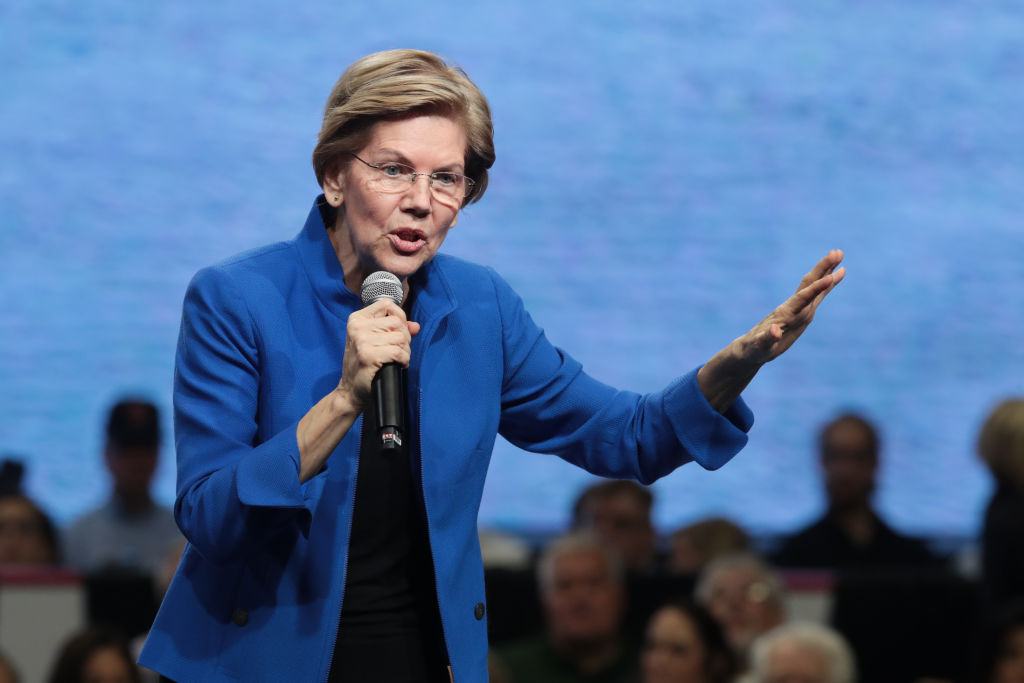Classical education is rising up to take its place.
Student Loan Class Warfare

The Biden administration is implementing backdoor loan forgiveness.
Last Friday, the Department of Education announced another extension of COVID-19 emergency student loan forbearance, which allows the 92 percent of student debtors whose loans are backed by the federal government an additional six months without making any payments.
Loan forgiveness is often packaged as a benefit for those on the lower half of the income spectrum. Senator Elizabeth Warren, for example, tweeted her two cents on Monday, calling for “#CancelStudentDebt.” During her failed run for the presidency, her campaign website justified total cancellation as a benefit to the working and middle classes. Avowed class warrior Bernie Sanders has also made student debt cancellation a centerpiece of the new economic deal he hopes to offer.
This all sounds reasonable, especially if you assume that poor or working-class people hold the bulk of student debt. But all loan forgiveness proposals overwhelmingly benefit the upper middle class—the children of America’s wealthiest quartile—along with the colleges and universities that have raised tuition at a rate far outstripping inflation, in part to fund a massive “equity”-oriented administrative bureaucracy and invent new academic disciplines to deconstruct venerable American institutions. Graduates of these institutions carry the ideology of social justice to their careers in government, education, the media, and corporate America.
Loan forgiveness is the regressive grift of the woke revolution.
Student loan programs were initially intended to benefit the brightest children from families of lesser means.. The federal government’s first serious, non-military foray into the student loan business came under Lyndon Johnson as part of the Great Society. In a 1964 commencement speech which served to brand his War on Poverty, LBJ set high hopes for federal subsidies and loans. “Our society will not be great,” he said, “until every young mind is set free to scan the farthest reaches of thought and imagination. We are still far from that goal.”
Since that implementation, the subsidies and benefits for the “college” track have—as all government programs tend to—increased year after year. There is about $1.7 trillion in outstanding student loan debt, most of which is now owned directly by the U.S. taxpayer. Few policies would be more economically regressive than canceling student loan debt; full cancellation would shovel $192 billion to the top quintile of income earners, while those in the bottom fifth of incomes would receive just $29 billion, a nearly seven-to one margin. But even this stark distribution underestimates how working-class Americans will be hurt by student loan forgiveness.
More Americans today hold a college degree than ever before, but the proportion of students on campus who come from lower-middle and working class backgrounds is shrinking, and is substantially lower today than it was when LBJ started the ball rolling during the Great Society. Government-backed student loans have enormously inflated the cost of college, turning it into a luxury credentialing product. Reagan’s Education Secretary Bill Bennett suggested that subsidies were directly contributing to tuition inflation in the eighties, but his hypothesis is now uncontroversial—for every dollar from the feds a university takes in, its tuition increases by 60 cents. The aggregate rise in tuition costs has erected an enormous barrier to entry for working and middle-class families who would like to send their kids to college. Tuition, along with housing and healthcare, is one of the most significant cost pressures on a middle class already struggling with wage stagnation.
Young people—men, in particular— from working-class backgrounds who graduate from high school looking to enter the workforce find that “degree inflation” has closed the door to traditional entry-level jobs, which now demand at least some college education. Job posting websites have conducted reviews showing that the same jobs that did not require a college degree five or ten years ago now write those little words at the bottom of their ads: “Bachelor’s preferred.”
Working and middle-class Americans thus face an unpleasant choice that is now ruthlessly familiar: take out massive loans to graduate with a boatload of debt for the same job and income their fathers didn’t need a degree or loans to attain, or find themselves locked out of the entry-level jobs they need to pursue the American Dream. And, in turn, to build financial and social capital, to make their own way without welfare assistance, and to be marriageable men to the women in their towns or cities.
Without that capital, the fate of the uncredentialed looks increasingly bleak. Suicide and overdose death rates for non-college educated whites have increased radically; the fate of working and middle class black Americans hasn’t been improved by subsidized college either. nd as for those black students who took out student loans, who bought into the idea of college as the ticket to upward mobility, the median net worth of black households with college graduates in their 30s has fallen from their parents’ households three decades ago. Black millennials, despite holding degrees at a higher rate than their parents , own 52 percent less wealth than previous generations of black Americans at the same age. As Eric Levitz wrote recently in New York Magazine, “If you’re baffled by the ‘woke’ left’s dissatisfaction with racial progress, put down White Fragility and pick up The Survey of Consumer Finances.”
The truly elite “one percent” don’t benefit from loan forgiveness much; they’re paying cash. Neither, really, do the elite institutions like Harvard, Yale, and Stanford, which can easily finance their graduates out of their own multi-billion dollar endowments. But for the class whom Michael Lind calls the “managerial elite”— that top ten, 20, or 30 percent of earners, many of them with higher degrees in law or medicine; the people who staff government bureaucracies and Nike HR departments, the ones who work for school districts and NGOs, the ones chiefly responsible for the woke mini-revolutions upending institution after institution—for them, student loan forgiveness is a huge boon.
It makes perfect sense that the Biden regime would reward the managerial class with student loan moratoriums and ultimately, forgiveness. The managerial and professional elite, and not the working class of Scranton to which Biden likes to pay folksy tribute on the stump and imagine himself the apotheosis, is the true constituency of the modern Democratic Party.
The American Mind presents a range of perspectives. Views are writers’ own and do not necessarily represent those of The Claremont Institute.
The American Mind is a publication of the Claremont Institute, a non-profit 501(c)(3) organization, dedicated to restoring the principles of the American Founding to their rightful, preeminent authority in our national life. Interested in supporting our work? Gifts to the Claremont Institute are tax-deductible.
They are as clueless as the ancien régime.
an invitation to noncompliance.



